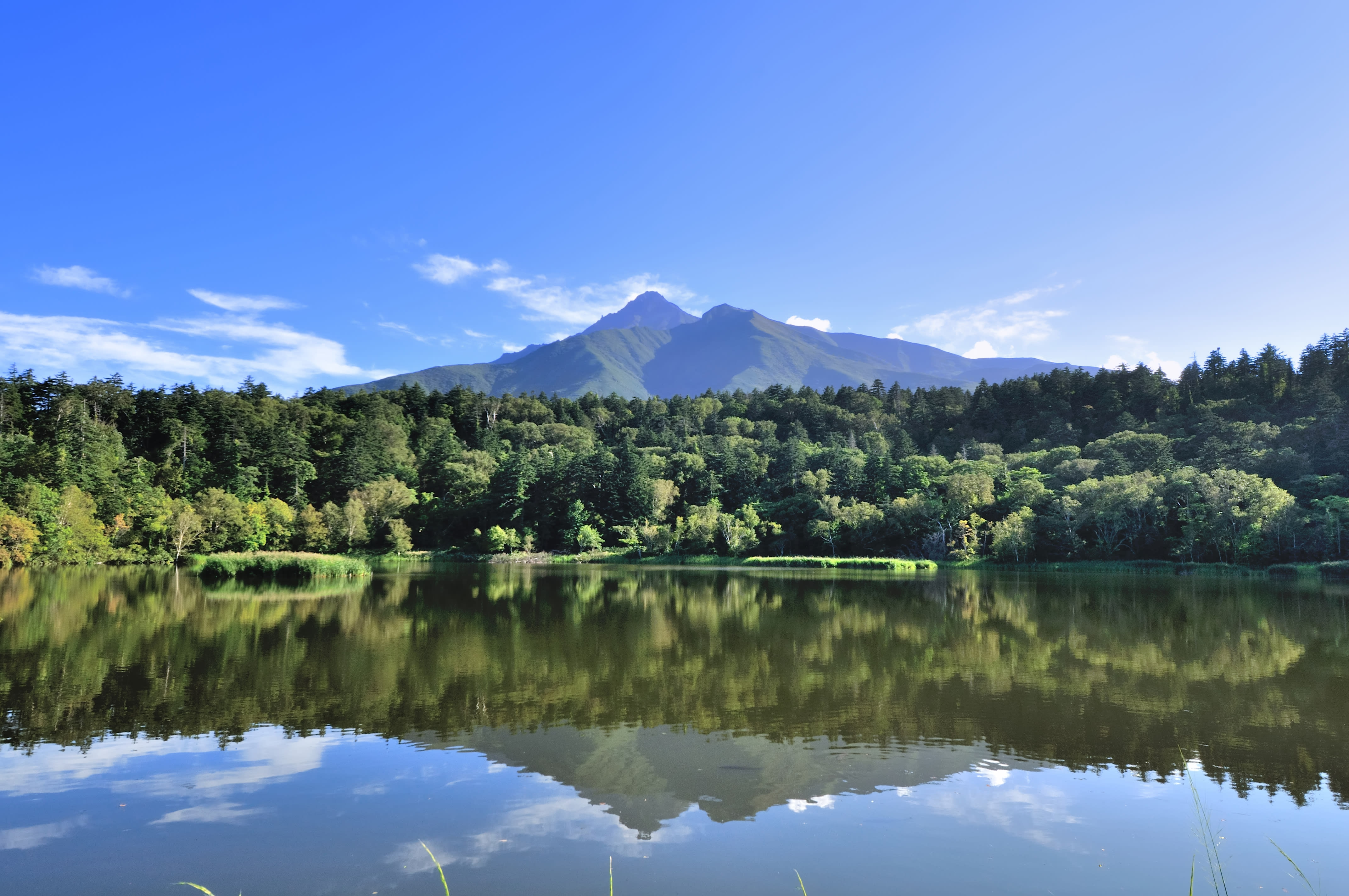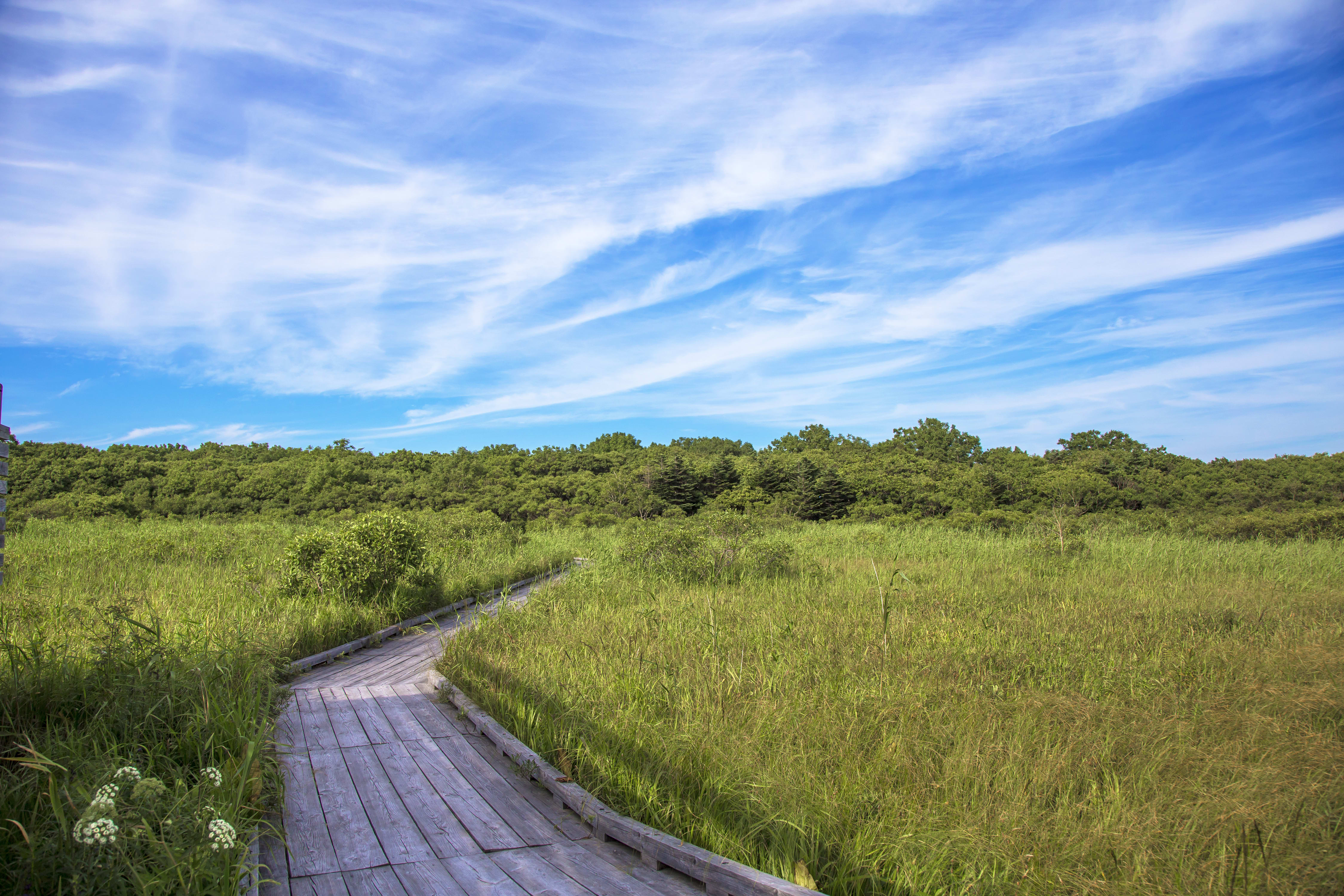Rebun Island
Rebun Island is known locally as “the island of flowers” because of the many indigenous plants and impressive seasonal blooms there. From Cape Sukoton, the northernmost part of the island, you can spot sea lions on nearby Todo Island and start half-day or full-day trekking courses. Take the clifftop path to get great views of the rugged coastline.
Just south of the cape you can walk on wooden pathways to view clusters of milky-white Rebun atsumorisou (Cypripediummacranthos var. flavum)—an endemic species that blooms nowhere else in the world.
The Momoiwa Trail is at the island’s southern end. Momoiwa means "peach rock" in Japanese, named after the shape of the rock. A trek along this route will take you through clifftop meadows. From late spring through summer, you can see the white flowers of the edelweiss species known locally as Rebun usuyukiso (Leontopodium discolor) and the vibrant golden blooms of the perennial globe flower (Trollius hondoensis).
Momodai Nekodai Observatory gives you fantastic views of the striking geological features of the island. Follow the course around the secluded bay to get a closer look at volcanic outcrops and Momoiwa, the distinctive 250-meter-high rock.

Lake Himenuma, Rishiri Island
Rishiri Island
Mount Rishiri dominates Rishiri Island. There are two hiking trails you can take to reach its summit: Oshidomari on the north coast and Kutsugata on the west coast. It takes about five hours to scale this peak. Both routes are challenging due to extensive erosion and, in colder months, are recommended for experienced hikers only.
Along these trails you’ll see many different landscapes. In the foothills are small, shallow lakes and marshlands. As you ascend, the scenery becomes more dramatic, opening up to sweeping views of the island and surrounding seas. The upper slopes are covered with alpine flora, including Rishiri hinageshi (Papaver fauriei)–an endangered species of yellow poppy that is only found on Rishiri.
Mikaeridai Picnic Site is at the starting point of the Kutsugata Trail. Visit the observation deck for panoramas of the Sea of Japan. This spot is also a favorite of locals for viewing the night sky, virtually free of surface light pollution.
Kanro Sensui freshwater spring is at the Third Station on the mountain on the Oshidomari route. Take a well-earned rest here and have a drink from the sweet mountain spring waters.
A visit to the lakes at Himenuma or Otatomarinuma includes spectacular views of Mount Rishiri. You may want to stroll the gentle shoreline trails that lead through forests and grasslands. There are many species of wild birds to see, including black woodpeckers.

Panke Marsh, Sarobetsu Plain
Sarobetsu Plain
The Sarobetsu Plain on Hokkaido is perfect for birdwatching. One favored course for birders is to take the kilometer-long boardwalk from the Sarobetsu Wetland Center, which has many scenic points and rest stops for viewing the marshland. You may spot various species, including migratory bean geese in spring and fall.
The Sarobetsu Primeval Flower Garden offers an up-close view of the region’s marshland plant life. Wild flowers bloom during the spring and summer, and one floral highlight are the fields of bright yellow Ezo kanzou daylilies that bloom from late June until early July.
The Horonobe Visitor Center introduces the vast range of plant and animal life of the Sarobetsu Plain in the form of videos and exhibits. The second-floor observation deck offers views of Mount Rishiri towering in the distance.
Not far from here is the Panke Marsh Picnic Site, another good spot for spotting various waterbirds and a grand view of Mount Rishiri.

Sarobetsu Plain
Culture
Seaweed is an important part of the Japanese diet, and the seas around Rishiri and Rebun islands are the source of a type of high-grade kelp known as Rishiri Kombu. Local farmers have a long tradition of laying out the seaweed to dry during the summer.
The area is also famous for sea urchin, which is a popular dish in Japan. Local people harvest this marine crop every year, but only remove a set amount to ensure a healthy population.
Locals dug the Sarobetsu Plain for peat until 2002. That peat was processed as fuel and shipped all over Japan, while some ended up at whisky distilleries. The areas where peat used to be dug up are now nature restoration projects, where preservation activities are carried out.






















